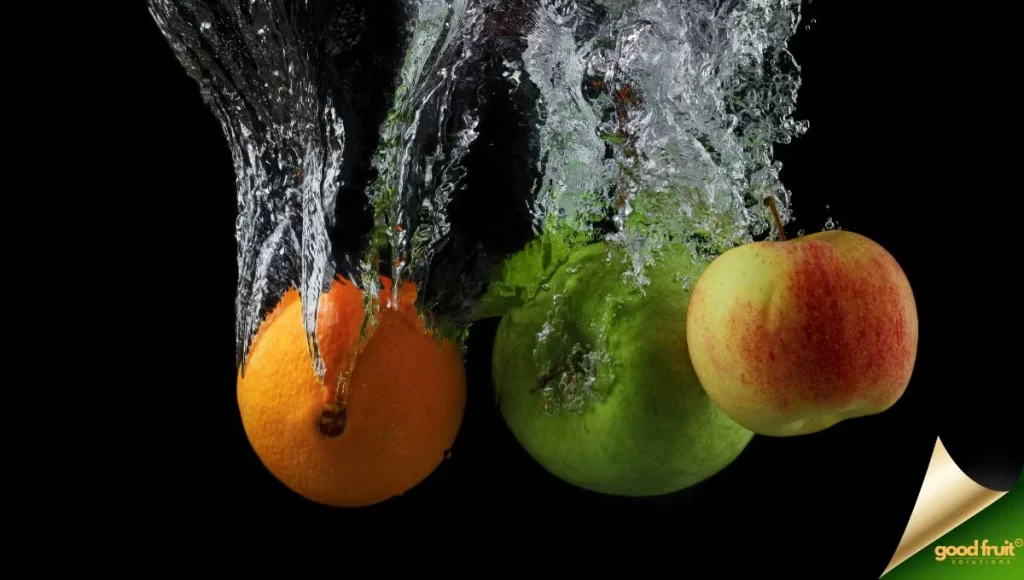The Sweet Story of Cacao in Davao City: From Tree to Table
Davao City, known as the “Cacao Capital of the Philippines,” is more than just a tourist destination with rich culture and vibrant city life—it’s a

Fruits are an essential part of a healthy diet, providing us with vital nutrients, vitamins, and antioxidants. However, before you enjoy that juicy apple or a handful of grapes, it’s crucial to ensure they are clean and safe to eat. Washing fruits thoroughly helps remove pesticides, dirt, and harmful bacteria that can cause foodborne illnesses.
This article will guide you on how to properly clean and wash fruits, emphasizing the importance of using safe, food-grade cleaners to boost our health.
Many fruits are treated with pesticides during their growth to protect them from insects and diseases. While these chemicals play a vital role in increasing crop yields and ensuring quality, they can be harmful if ingested in large quantities.
Residual pesticides on fruits can pose potential health risks, especially to children, pregnant women, and individuals with weakened immune systems. Washing fruits thoroughly helps reduce the pesticide load, making them safer for consumption.
Dirt and dust also accumulate on the surface of fruits during harvesting, transportation, and storage. This dirt may carry harmful microorganisms that can lead to foodborne illnesses. Thorough washing removes these contaminants, ensuring that your fruits are clean and ready to eat.
Fruits, especially those consumed raw, can harbor harmful bacteria such as E. coli, Salmonella, and Listeria. These bacteria can cause severe illnesses, leading to symptoms like vomiting, diarrhea, and, in some cases, hospitalization.
Contamination can occur at any point in the supply chain, from the farm to your kitchen. Washing fruits properly is a crucial step in minimizing the risk of bacterial contamination.
The first step in washing fruits is to rinse them under running water. This helps remove loose dirt, dust, and some surface pesticides. Avoid using hot water, as it can cause some fruits, especially those with thin skins, to soften or lose their texture. Cold or lukewarm water is ideal for rinsing.
For fruits with thick skins, like melons and oranges, use a clean produce brush to scrub the surface. This helps remove any stubborn dirt or residues trapped in the skin’s crevices. Even though you may not eat the skin of these fruits, washing them thoroughly prevents any contaminants from transferring to the flesh when cutting or peeling.
While water alone can remove some contaminants, using a food-grade cleaner provides an extra layer of protection. These cleaners are specially formulated to break down and remove pesticide residues, wax, and bacteria from fruits.
When choosing a food-grade cleaner, opt for one that is labeled as safe for food surfaces. Avoid using dish soap or other household cleaners, as they may contain harmful chemicals that the fruit can absorb. Follow the manufacturer’s instructions on the correct dilution and application method.
To use a food-grade cleaner:
After washing and rinsing, it’s important to dry the fruits before storing them. Excess moisture can promote the growth of mold and bacteria, especially if the fruits are stored in the refrigerator. Use a clean kitchen towel or paper towels to pat the fruits dry.
For delicate fruits like berries, place them on a clean cloth or paper towel and allow them to air dry. Ensure the fruits are completely dry before placing them in a storage container or the refrigerator.
Once the fruits are clean and dry, store them in a clean container to prevent cross-contamination. Please avoid using the same container they were stored in before washing unless it has been thoroughly cleaned and dried.
Certain fruits, like berries and grapes, are best stored in the refrigerator to prolong their freshness. Please place them in a clean, dry container with a lid or cover them with plastic wrap to prevent moisture loss and contamination.
While cleaning fruits helps prolong their shelf life, they are still perishable. Consume washed fruits within a few days to enjoy them at their peak freshness and reduce the risk of spoilage.
Washing fruits thoroughly before consumption is a simple yet vital step in ensuring food safety. By removing pesticides, dirt, and bacteria, you can enjoy the full benefits of fruits without compromising your health.
Using a safe, food-grade cleaner adds an extra layer of protection, making sure your fruits are as clean as possible. Remember to rinse, clean, and dry your fruits properly, and store them in a clean environment to keep them fresh and safe to eat.
For more tips on maintaining a healthy lifestyle, subscribe to Good Fruit Solutions, where we share practical advice for everyday living.
Davao City, known as the “Cacao Capital of the Philippines,” is more than just a tourist destination with rich culture and vibrant city life—it’s a
Eating seasonal fruits offers not only fresh and flavorful options but also numerous health benefits. Nature provides a variety of fruits packed with nutrients that